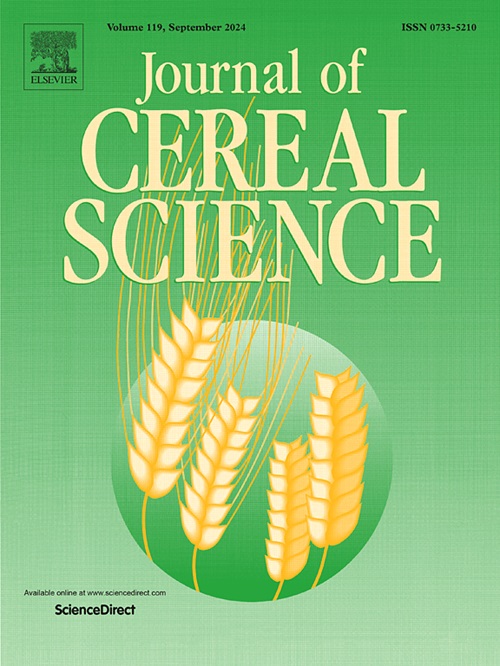Post-flowering environment determines zein composition and kernel hardness in maize
IF 3.9
2区 农林科学
Q2 FOOD SCIENCE & TECHNOLOGY
引用次数: 0
Abstract
Maize (Zea mays L.) grain endosperm is composed by starch and proteins (mainly zeins, Z1 and Z2) and other minor components. The dry milling industry demands grains with high endosperm hardness, which is determined by both its chemical composition and by the structure established within its components. Kernel hardness is influenced by both genotype and post-flowering environmental conditions, which affect the depositions of these components. This study aimed to explore the variations in zein composition under different post-flowering environments achieved by combining sites, sowing dates, and year, which resulted in different levels of source-sink ratio during the grain filling period. Additionally, we examined the relationship between these variations and kernel hardness. The combination of site, sowing date and genotype resulted in a wide range of protein and total zein percentage, primarily driven by variations in Z1. Moreover, for the semi-dent and flint hybrids, an increase in Z1/Z2 ratio was explained by a higher source-sink ratio during the grain filling period. While variation in total, Z1 and Z2 percentages did not account for the differences in kernel hardness across environments, kernel hardness was linked to an increase in Z1/Z2 ratio. Further research is needed to better understand the mechanisms underlying kernel hardness.

花后环境决定玉米的玉米蛋白组成和籽粒硬度
玉米(Zea mays L.)籽粒胚乳由淀粉和蛋白质(主要是玉米蛋白、Z1和Z2)以及其他少量成分组成。干磨工业要求籽粒具有较高的胚乳硬度,这是由其化学成分和其成分内部建立的结构决定的。籽粒硬度受基因型和花后环境条件的双重影响,从而影响这些成分的沉积。本研究旨在通过结合立地、播期和年份,探讨不同花期后环境下玉米蛋白组成的变化,这些变化导致灌浆期玉米源库比的不同水平。此外,我们还研究了这些变化与果仁硬度之间的关系。地点、播期和基因型的组合导致了蛋白和总玉米蛋白百分比的大范围变化,这主要是由Z1的变异驱动的。半凹陷型和燧石型杂种Z1/Z2比值的增加与灌浆期源汇比增大有关。虽然总体、Z1和Z2百分比的变化不能解释不同环境下籽粒硬度的差异,但籽粒硬度与Z1/Z2比值的增加有关。需要进一步的研究来更好地理解核硬度的机制。
本文章由计算机程序翻译,如有差异,请以英文原文为准。
求助全文
约1分钟内获得全文
求助全文
来源期刊

Journal of Cereal Science
工程技术-食品科技
CiteScore
7.80
自引率
2.60%
发文量
163
审稿时长
38 days
期刊介绍:
The Journal of Cereal Science was established in 1983 to provide an International forum for the publication of original research papers of high standing covering all aspects of cereal science related to the functional and nutritional quality of cereal grains (true cereals - members of the Poaceae family and starchy pseudocereals - members of the Amaranthaceae, Chenopodiaceae and Polygonaceae families) and their products, in relation to the cereals used. The journal also publishes concise and critical review articles appraising the status and future directions of specific areas of cereal science and short communications that present news of important advances in research. The journal aims at topicality and at providing comprehensive coverage of progress in the field.
 求助内容:
求助内容: 应助结果提醒方式:
应助结果提醒方式:


